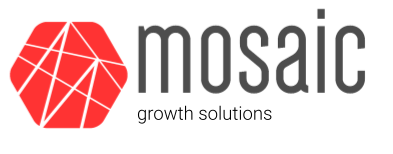Product-led growth (PLG) is generating a lot of buzz in the B2B SaaS space, but few people can effectively describe what it is exactly. For me personally, I know it when I see it, but it can be challenging to introduce the concept of PLG to our clients.
If you look up the definition of PLG, you’ll find something like this:
“Product-Led Growth is defined as a go-to-market strategy that relies on using your product as the main vehicle to acquire, activate, and retain customers. “
While somewhat accurate, this definition is simply too abstract, especially for those entirely new to the concept. As an avid supporter of PLG and a believer that it can have a transformative impact on growth, I have set about finding a way to more effectively introduce the topic to clients in an engaging, more tangible way..
A New Approach to Defining Product Led Growth
I mention that the definition above is “somewhat” accurate because I don’t agree with the categorization of PLG as a strategy or even a tactic. Rather, product-led growth should be defined as a mindset that permeates every growth tactic and strategy across the customer lifecycle from awareness to retention. At its most basic level, PLG is a way of thinking that constantly comes back to a simple question – how can you use one of your most valuable assets, your product, to gain widespread adoption?
Before getting any more specific, I want to turn to a real-world example of successfully embracing this mindset: Bill.com.
Traditional invoice processing involves a vendor’s accounts receivable team sending an invoice to a customer’s accounts payable team. Once the invoice is sent, it enters a seemingly black hole for the vendor, which is only illuminated when the vendor receives payment. Bill.com transforms this process by adding valuable visibility for the vendor while also making it easier for accounts payable teams to manage the accounts payable process – a win-win for both parties and, as I am about to describe, a big win for Bill.com. The revamped process offers Bill.com several opportunities to build brand awareness, and more importantly, get its product in front of potential new customers. Here are some examples:
- When the accounts payable team enters the invoice into the Bill.com system, the vendor who sent the invoice to the accounts payable team receives an email letting them know that the invoice has been received and accepted.
- When the invoice is paid the vendor receives another email letting them know that the check has been sent or that the payment will be deposited into their account.
- If the vendor wants to monitor the status of the invoice beyond the emails, they can create an account on Bill.com that will give them an updated status of the invoice.
Speaking from experience as a vendor, the regular status updates and web management features provide terrific visibility, but they also made me aware of Bill.com.
We have implemented product-led growth initiatives with many of our clients using a similar mindset. A few examples of these initiatives will give additional clarity:
- With one sales intelligence client, we were able to utilize their product data to drive large volumes of qualified organic search traffic.
- Working with a leading link-shortening provider that uses a freemium model, we were able to review the product and to find and display product triggers to encourage their customers to upgrade.
- With one B2B/B2C client that had both app and web-based acquisition paths we helped coordinate a more unified experience that reduced friction for their customers.
- At a B2B SaaS real estate company, we helped them optimize their transactional email and product experience to increase engagement and build awareness.
- An online education provider was able to leverage existing course activities from their product to build a large learning website to acquire prospects.
- Another B2B SaaS company we worked with developed an interface to make product reports and alerts more shareable.
All of these initiatives resulted in a significant contribution to growth for these clients.
TL;DR
Most SaaS companies we work with have ample untapped opportunity to better utilize their actual products in everything from brand building, to new customer acquisition, to user retention.
To adopt the PLG mindset, start by conducting a product audit to reveal growth opportunities. Go through your entire product to find ways to increase awareness, acquisition, conversion, activation and retention and assign an impact score to each item. Share this list with your product and development teams to gain an understanding of the level of effort. Implementing these changes will build buy-in around the concept of product-led growth.
These questions provide some insight into the product-led growth mindset:
- Lifecycle stage: Awareness
- Is there something we can do with our product to increase shareability?
- Is there data within the product that can be used as individual content or content at scale (i.e. real estate data, courses, company data) to boost organic search traffic?
- Can we build a network effect into our product?
- Lifecycle stage: Conversion
- Is there some way to update our product to better communicate with our customers and prospects to increase conversion and retention?
- Is there functionality within the product that can be utilized to engage with prospects?
- Are there ways to reduce friction within the product to increase adoption?
- Lifecycle stage: Retention
- Can we store information for our end users to make the product stickier?
- Can adding users make the product more valuable? i.e. Slack
- Can we integrate the product into customers’ existing infrastructures?
The possibilities for product-led growth are extensive and will continue to grow which is why the adoption of a mindset is critical. It isn’t just a tactic that gets accomplished, but a way for entire organizations to think.


Recent Comments